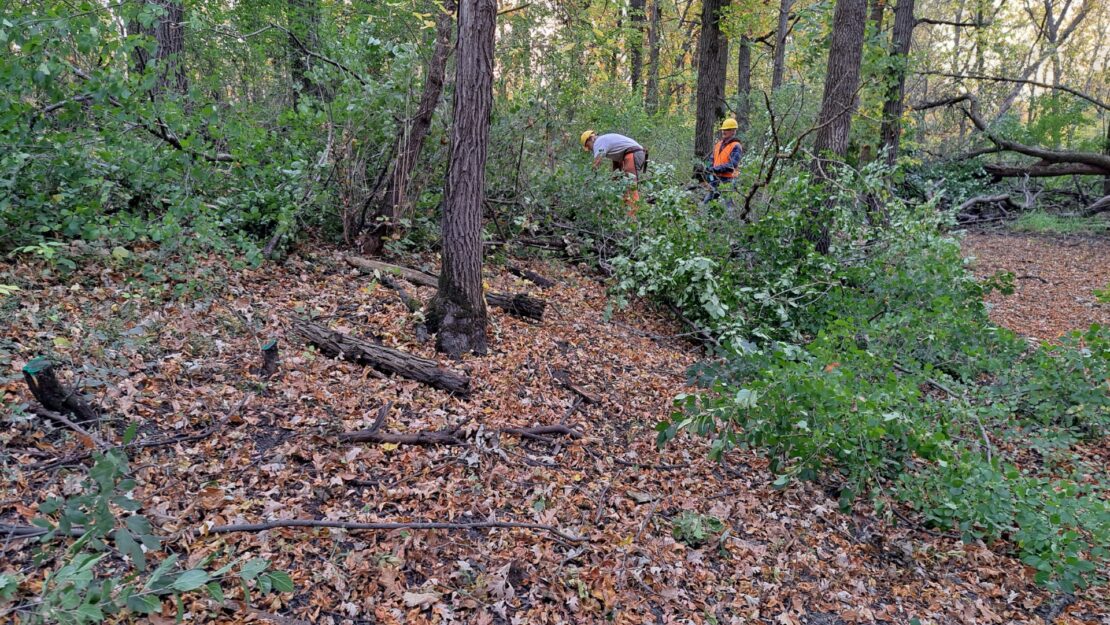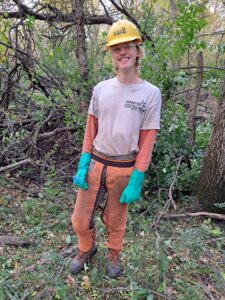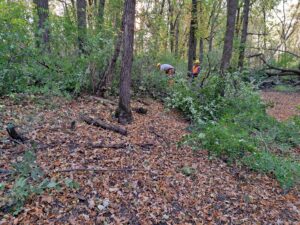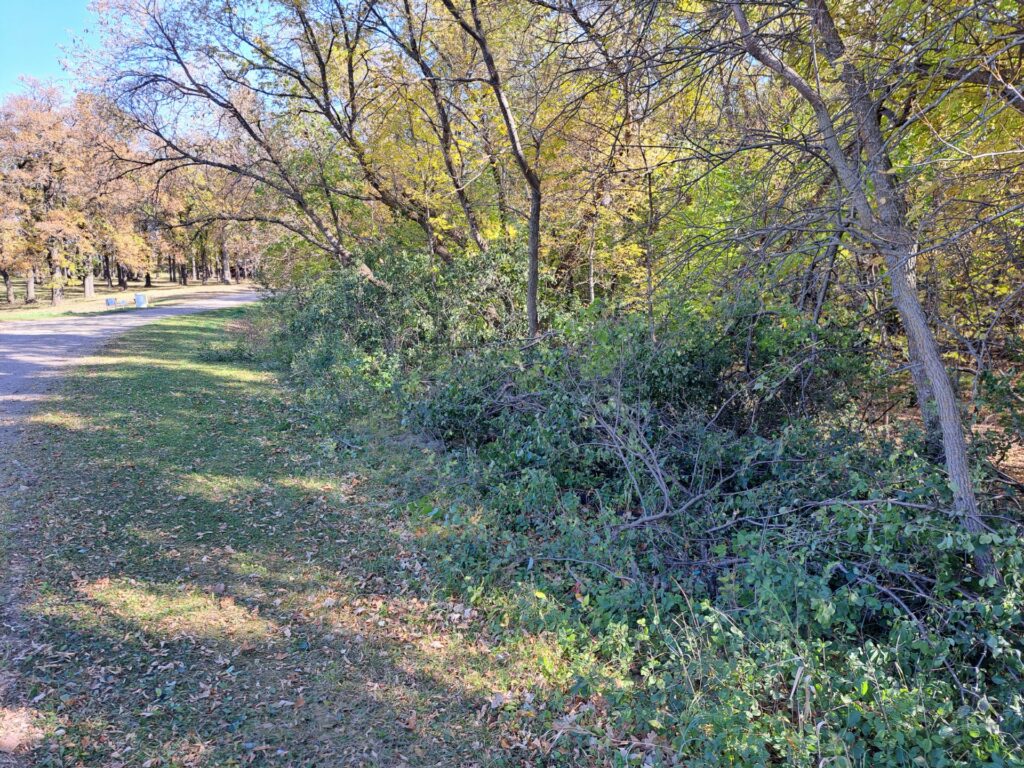Buckthorn Battle at the Pennington County Sportsmen’s Club

By Kyle Dahlquist, Clean Water Corpsmember / AmeriCorps Member placed at Pennington SWCD

Conservation efforts in Minnesota often involve the identification and management of invasive species. Emerald ash borer, Eurasian watermilfoil, and zebra mussels are some of the more common and harmful invasives in the state. One particularly sinister plant has taken over many forests in the state: buckthorn.

Buckthorn invasive to the Midwest comes in two unpleasant flavors: European (common) and glossy. Functionally similar in biological nature and ecological devastation, conservation and natural resource departments place heavy emphasis on control and eradication of these trees. Buckthorn is a wildly proliferating blight that takes over the understory of forests, shading out smaller trees and shrubs, preventing regrowth of larger species, and even harming the water quality of any nearby bodies. It is especially hardy and resilient to removal efforts. Birds eat the nutrient-poor berries and spread the seeds far and wide, making quarantine difficult. If left unchecked, one may find entire forests consumed in a noxious monoculture. It sounds scary, but thankfully we’re fighting back!

CCMI recently sent their Superior Crew all the way up to my neck of the woods: Thief River Falls. The Pennington County Sportsmen’s Club requested assistance in managing their infested woods. I was happy to assist the 4-person crew with cut-stumping, herbicide application, and physical removal.
If you think you may have buckthorn on your property, autumn is an excellent time to rid yourself of this harmful shrub. Buckthorn’s egg-shaped, serrated leaves keep their green longer than most trees, so they should be easy to spot. Look for their characteristic blue-black berries, sub-opposite leaf arrangement, and numerous thorny branches. Buckthorn grows to around 10-25 feet in mature stands. Check out the links below for more information from the Minnesota DNR and University of Minnesota.
